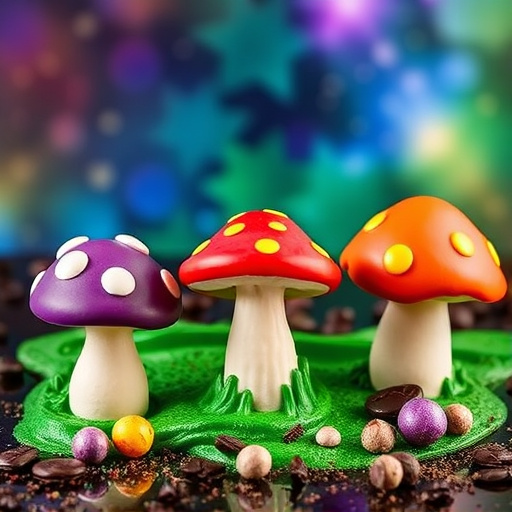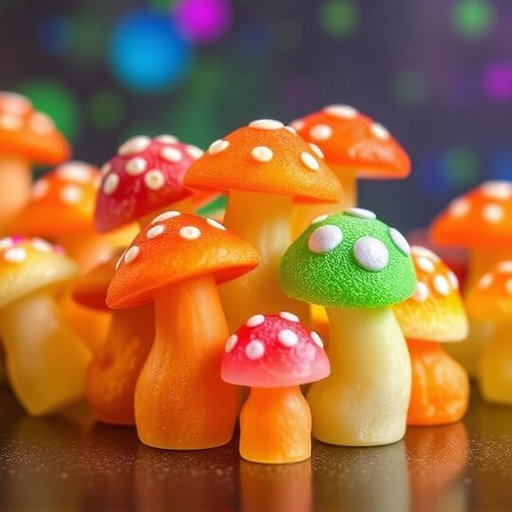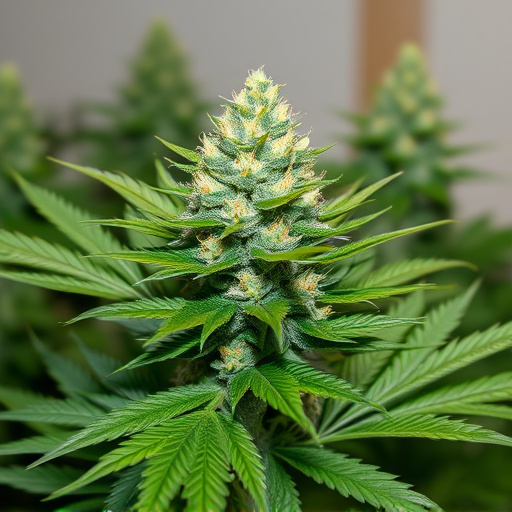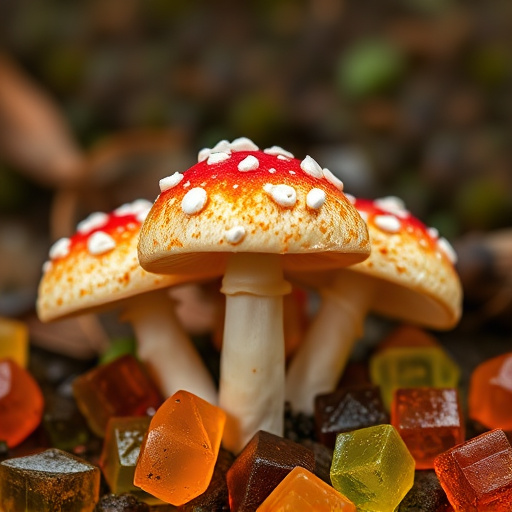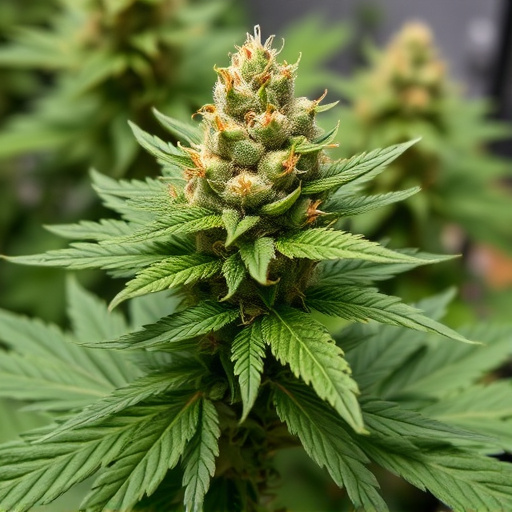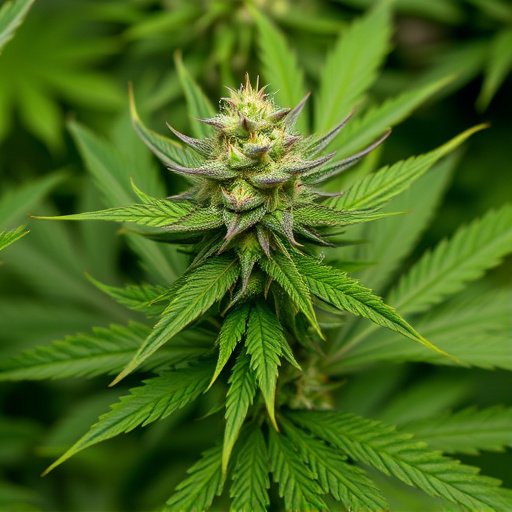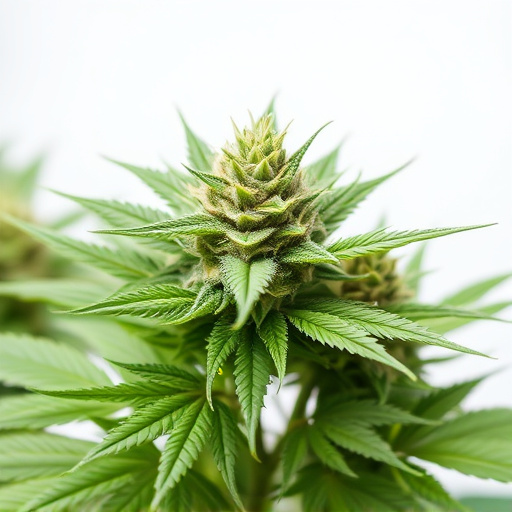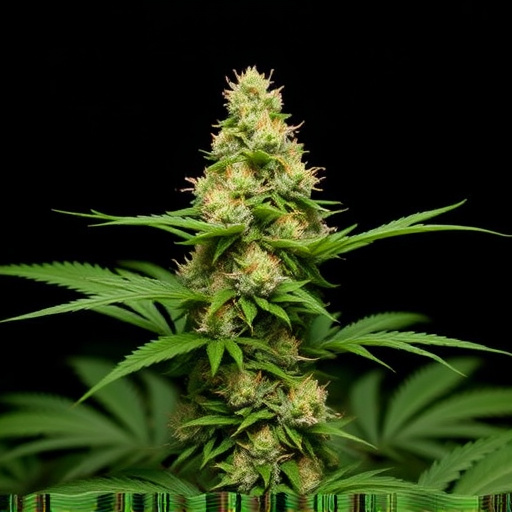Medical marihuana strains' active compounds, like THC and CBD, interact with brain's dopamine and serotonin systems, offering therapeutic benefits but also risks. High-THC strains boost dopamine release for pain management, while CBD-rich strains regulate serotonin levels to reduce anxiety and depression. Understanding each strain's cannabinoid profile is crucial for maximizing potential treatments while mitigating side effects associated with neurotransmitter modulation.
Cannabis has long been known for its psychological effects, with many attributing these to its interaction with neurotransmitters like dopamine and serotonin. This article delves into the intricate relationship between cannabis, dopamine, and serotonin, exploring how medical marijuana strains impact these chemical messengers. By understanding these mechanisms, we can better appreciate both the recreational and therapeutic potential of cannabis, particularly in the context of specific medical conditions.
- Cannabis and Dopamine: Understanding the Interaction
- The Role of Serotonin in Cannabis Consumption
- Medical Marijuana Strains and Their Effect on Neurotransmitters
Cannabis and Dopamine: Understanding the Interaction

Cannabis and its interaction with dopamine, a key neurotransmitter associated with pleasure, reward, and motivation, has been a subject of growing interest in neuroscience. When an individual consumes medical marihuana strains, the plant’s active compounds, particularly tetrahydrocannabinol (THC), bind to specific receptors in the brain, known as CB1 receptors. This binding triggers a cascade of events, increasing the release of dopamine and enhancing its activity. The surge in dopamine levels contributes to the euphoric and rewarding sensations often associated with cannabis use.
This interaction between cannabis and dopamine is complex and can have both positive and negative effects. While it may provide relief for certain conditions, such as chronic pain or nausea, excessive or prolonged cannabis use can lead to disruptions in dopamine regulation. This imbalance might contribute to issues like addiction or mood alterations. Understanding this delicate interplay is crucial for navigating the therapeutic potential of medical marihuana strains while mitigating their risks.
The Role of Serotonin in Cannabis Consumption
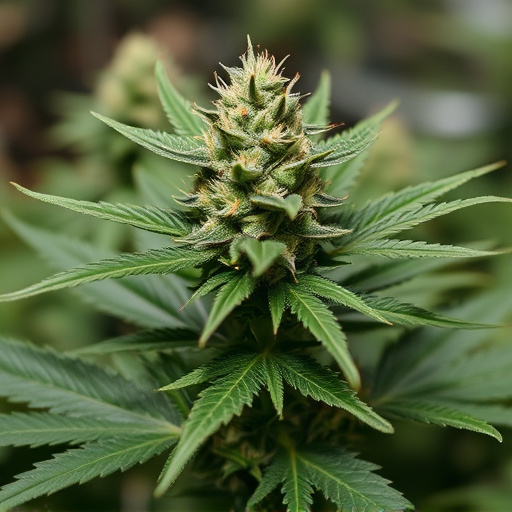
Serotonin, often referred to as the ‘feel-good’ hormone, plays a pivotal role in regulating mood, appetite, and sleep—all of which can be influenced by cannabis consumption. When an individual uses medical marihuana strains, serotonin levels in the brain can experience fluctuations. Cannabinoids present in cannabis interact with serotonin receptors, potentially leading to elevated serotonin activity. This interaction may contribute to the therapeutic effects reported by users, including improved mood and reduced anxiety.
Interestingly, different cannabis strains vary in their cannabinoid profiles, which consequently impacts their effect on serotonin. Some strains are known to be high in THC (tetrahydrocannabinol), the primary psychoactive compound, while others have higher levels of CBD (cannabidiol). Research suggests that CBD may help regulate serotonin release and has shown promise in treating anxiety and depression. Thus, understanding the specific cannabinoid makeup of medical marihuana strains is essential for maximizing therapeutic benefits while managing potential side effects related to serotonin modulation.
Medical Marijuana Strains and Their Effect on Neurotransmitters
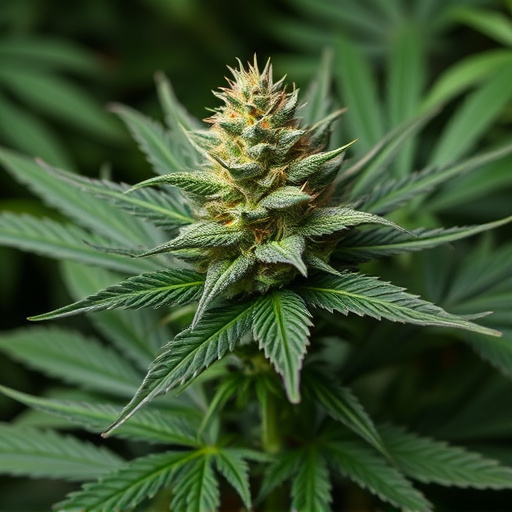
Medical marijuana has gained significant attention for its potential therapeutic benefits, and much of this is attributed to its effect on neurotransmitters like dopamine and serotonin. Different strains of medical marihuana contain varying levels of cannabinoids, particularly THC (tetrahydrocannabinol) and CBD (cannabidiol), which interact with the body’s endocannabinoid system. These interactions can modulate neurotransmitter activity, influencing mood, motivation, pleasure, and cognition.
For instance, high-THC strains are known to stimulate dopamine release, leading to feelings of euphoria and heightened reward responses. This mechanism could explain why medical marijuana is often used for conditions like chronic pain, where it may help alleviate symptoms by enhancing dopamine’s role in pain perception. On the other hand, CBD-rich strains have shown promise in modulating serotonin levels, which might contribute to their anxiolytic (anxiety-reducing) and antidepressant effects. The specific cannabinoid profile of medical marijuana strains thus plays a crucial role in determining their impact on these key neurotransmitters, offering potential treatments for various neurological and psychiatric disorders.
Cannabis’s impact on dopamine and serotonin, key neurotransmitters regulating mood, reward, and cognition, is complex. While cannabis consumption can temporarily elevate these chemicals, leading to feelings of pleasure and relaxation, chronic use may disrupt their balance. This can result in potential long-term effects on mental health. Understanding how medical marijuana strains interact with these neurotransmitters is crucial for those considering its therapeutic use. Different strains, with varying cannabinoid profiles, may offer targeted benefits while minimizing negative impacts, highlighting the importance of personalized treatment approaches based on specific conditions and individual biochemistry.
